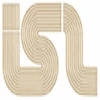The brushless DC motor is used in many different applications, in all industries across the world. Also referred to as a BLDC motor, it is operated by a controller which supplies pulses of power to the motor’s windings, controlling both the speed and torque.
Brushless motors are very efficient at producing high torque values across a wide range of speeds. The design of a brushless DC motor incorporates a permanent magnet that rotates around a fixed armature. This configuration eliminates the need for a power connection to the armature.
There is an ever-present need for improving technology, evermore so now than ever, to aid us in the fight against future pandemics. Additionally, the percentage of the population that requires medical care has increased tremendously. Pairing this with the immense global demand for testing and new treatments, the need for devices that have increased versatility and reliability is at an all time high.
To be effective at doing their job, medical devices need to be powered with high torque, across a range of speeds without being worn-out too quickly. This role is perfect for the humble brushless DC motor.
Medical equipment is getting ever smaller and more compact. Reducing the size of devices results in a diminished ability to dissipate heat, which in turn can have a negative impact on motor performance.
Harnessing the potential
A Brushless DC motor eliminates waste heat very efficiently. The majority of heat transfer results from convection. Motor heat transfer loss is referred to as ‘I2R loss’, and it is significantly lower on a BLDC motor. The ability to eliminate excess heat is one of the reasons why BLDC motors are more reliable than brushed motors, which are not able to achieve the same level of efficiency as a brushless DC motor.
The windings in BLDC motors are stationary and fixed to the motor housing, which means it can more effectively dispel excess heat. This is why BLDC motors are the preferred choice for applications that require cool-running in a confined space. This feature is particularly beneficial to the medical industry, as low-maintenance, micro-sized devices are made possible with a BLDC motor.
Perhaps the most crucial feature of a brushless dc motor is the fact that it has no brushes. Unlike its brushed counterparts, brushless motors have no physical point of contact between the two parts of the motors, known as brushes. Brushes eventually wear out and need to be replaced. This dramatically reduces wear and tear, so much so that life expectancy is increased to almost 10,000 hours in the average BLDC motor; in contrast to the measly 2000-5000 hours lifecycle of a brushed motor.
Find the right motor for your application with ISL Products.
ISL Products is a leading provider of bespoke-engineered electromechanical component solutions. Providing component solutions based on the exact needs of your application, ISL Products offer integrated assistance, full customer support, and global logistics. As technology has advanced, ISL Products has worked with customers to design and manufacture custom solutions for applications around the globe.


